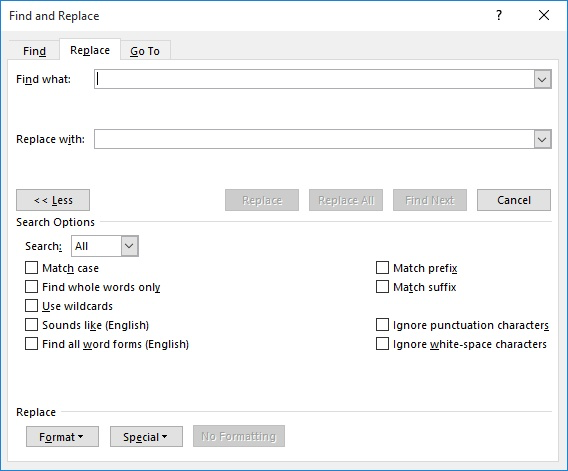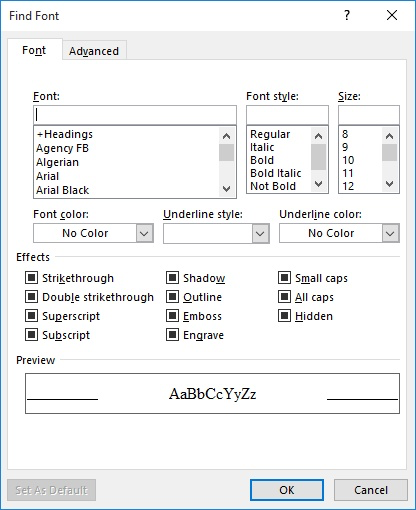Please Note: This article is written for users of the following Microsoft Word versions: 2007, 2010, 2013, 2016, 2019, 2021, and Word in Microsoft 365. If you are using an earlier version (Word 2003 or earlier), this tip may not work for you. For a version of this tip written specifically for earlier versions of Word, click here: Protecting Hidden Text.
Written by Allen Wyatt (last updated December 28, 2024)
This tip applies to Word 2007, 2010, 2013, 2016, 2019, 2021, and Word in Microsoft 365
Hidden text is a great help to those who want to "hide" certain parts of a document, either from viewing or from printing. However, it is not very good for hiding information that you don't want others to see in a document you are distributing. They (the ones to whom you are distributing the document) can display or print hidden text just as easily as you can.
There is no built-in feature of Word that allows you to "lock" hidden text so it can't be viewed. The best solution, then, is to simply remove all your hidden text as a last step before distributing your document. You can do this by using the Search and Replace features of Word, as follows:

Figure 1. The Replace tab of the Find and Replace dialog box.

Figure 2. The Find Font dialog box.
If you find yourself stripping out hidden text quite a bit, you can automate the process by recording a macro that performs the above steps, or you can use the following macro:
Sub StripAllHidden()
Dim rngsStories As Word.StoryRanges
Dim rngStory As Word.Range
On Error GoTo NoDocOpen
Set rngsStories = ActiveDocument.StoryRanges
On Error GoTo 0
'Need to loop through all 'stories' to
'remove hidden text from footnotes, headers,
'etc. as well as body text.
For Each rngStory In rngsStories
With rngStory.Find
.ClearFormatting
.Font.Hidden = True
Call .Execute(vbNullString, False, False, False, _
False, False, True, wdFindContinue, True, _
ReplaceWith:=vbNullString, _
Replace:=wdReplaceAll)
End With
Next
Exit Sub
NoDocOpen:
End Sub
The other advantage of using this macro is that it will also look for hidden text in places where the regular Search and Replace function won't: footnotes, endnotes, headers, footers, etc.
Note:
WordTips is your source for cost-effective Microsoft Word training. (Microsoft Word is the most popular word processing software in the world.) This tip (12438) applies to Microsoft Word 2007, 2010, 2013, 2016, 2019, 2021, and Word in Microsoft 365. You can find a version of this tip for the older menu interface of Word here: Protecting Hidden Text.

Discover the Power of Microsoft Office This beginner-friendly guide reveals the expert tips and strategies you need to skyrocket your productivity and use Office 365 like a pro. Mastering software like Word, Excel, and PowerPoint is essential to be more efficient and advance your career. Simple lessons guide you through every step, providing the knowledge you need to get started. Check out Microsoft Office 365 For Beginners today!
Don't like the font that Word uses for a default in your new documents? You can pick a different font, but the way you ...
Discover MoreHighlighting text, using the Highlight tool, is a great way to mark up a document. Normally you need to use the toolbar ...
Discover MoreImagine that you are typing away, and all of a sudden your beautiful prose turns into a series of small rectangles that ...
Discover MoreFREE SERVICE: Get tips like this every week in WordTips, a free productivity newsletter. Enter your address and click "Subscribe."
There are currently no comments for this tip. (Be the first to leave your comment—just use the simple form above!)
Got a version of Word that uses the ribbon interface (Word 2007 or later)? This site is for you! If you use an earlier version of Word, visit our WordTips site focusing on the menu interface.
Visit the WordTips channel on YouTube
FREE SERVICE: Get tips like this every week in WordTips, a free productivity newsletter. Enter your address and click "Subscribe."
Copyright © 2026 Sharon Parq Associates, Inc.
Comments